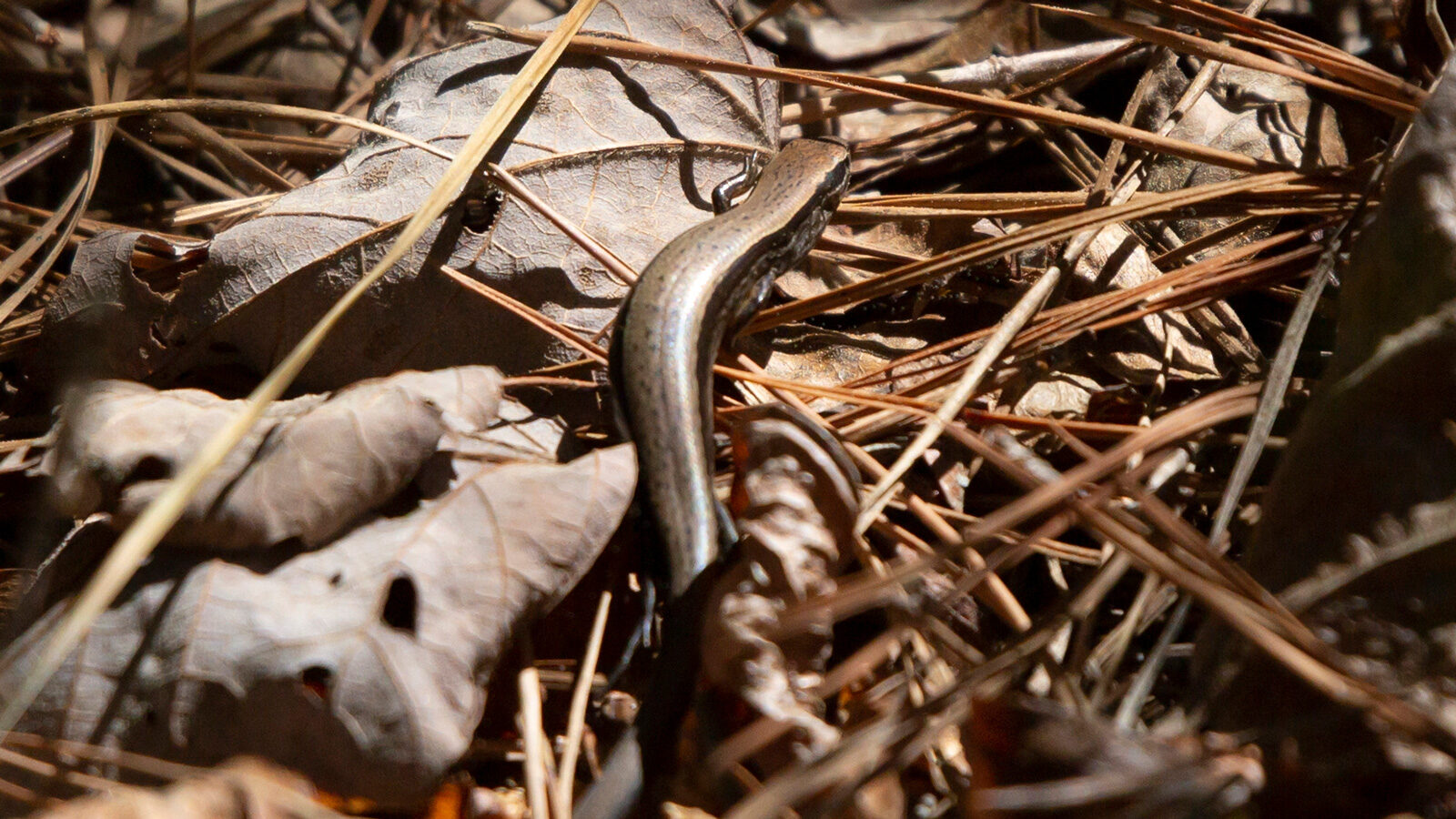
Did you know that little brown skinks do not climb?
Little Brown Skinks
at
a Glance

Key Features:
Little brown skinks are long, brown or tan lizards with a dark brown stripe on each side.
Least Concern - Population Stable
Habitat:
Forests
nesting habits:
Little brown skinks lay eggs in spring and summer.
seasons little brown skinks are active in our area:
All Year
Diet:
Insects, isopods, and spiders
hunting Behavior:
Little brown skinks hunt in leaves and litter.
Commonly Confused With:
Brown Anoles and Salamanders

Little brown skinks are often confused with brown anoles because both are brown lizards. Little brown skinks have a dark brown stripe on each side.

Little brown skinks are often confused with salamanders because both have long bodies and legs. Little brown skinks have scales.